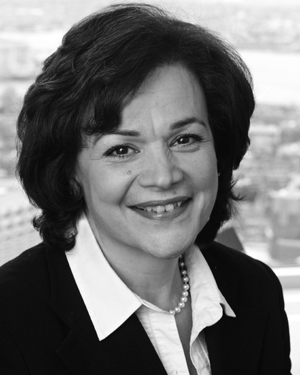The wizard of the BSA

It wasn’t long after Hubert Murray FAIA’s admission to the previous presidents’ club that Richard Fitzgerald took me to my inaugural lunch. I had already heard about my choice of entrée (management style)—Jimmy Carter or Ronald Reagan—but was unprepared for Richard’s dessert, or should I say “desert?” After 23 years at the helm of the BSA, Richard announced that he was planning to retire at the end of my term. I was thunderstruck because I honestly had no vision of the BSA without him. To me, Richard was like the gardener of a field of wildflowers. The knowing would perhaps glimpse the underlying plan, where the naive thought that these flowers merely blew in with the wind. The perfume of the garden and its serendipity were delights that gave a welcome relief to those of us who in our work life toiled with schedules and budgets. And the board lunches! Did I mention the lunches?
In 2008, when the BSA hosted the AIA Convention, there were all manner of meetings and requirements, fundraising and coordinating to be done. My admiration for the Boston architectural community and the BSA staff just skyrocketed. It was an extraordinary level of effort to manage the clash of cultures between the BSA and the AIA. The convention was a huge success. Highlighting the event was the new Rafael Viñoly Boston Convention and Exhibition Center, where sunlit window banks became perches for those chance encounters with colleagues from all over the country. It was a remarkable stroke of luck that the facility was ready in time for the occasion. We hosted the chapter party at the McKim, Mead & White Boston Public Library, which was lit and decorated so beautifully. Its staircases, lobbies, and Reading Room imparted feelings of such grandeur and grace. It was a showcase to the national architectural community for Boston’s evolving identity as a world-class city. There were those testy moments too, as we rallied to contest Mayor Thomas Menino’s plan to relocate or demolish the iconic Boston City Hall. Displaying the Kallmann McKinnell & Wood sketches were an extraordinary treat to underscore the courage and innovation of the original design.

In my role as president, I hosted several charrettes—three of particular note. The first charrette was on affordable housing, which has been the subject of my professional career. We developed a statement of support for legislation to advance the production of affordable units in cooperation with Massachusetts representative Barney Frank. At that time, there was a movement afoot to eliminate the low-income-housing tax credit, which, in the absence of direct subsidy for production, was the single most important incentive for new development. The second charrette was to think through how a design center for the BSA might work: What kinds of activities would be hosted? Who would be the audience? Where should it be located? and How would we pay for it? It was a few years before the opportunity actually presented itself in the move to Congress Street, but we developed a vision in 2008 that gave us all some sense that such a facility would advance the mission of the BSA as a community resource. And third, I met with the previous presidents to talk through the process that I intended to follow in finding a replacement for our executive director. We engaged the services of two consultants to help us through the thorny issues of heightening our awareness of what kind of organization we were and what kind of leader we wanted. In retrospect, it all sounds so simple, but at the time, answers were elusive. I convened a search committee to explore our mission and goals, and strategies to achieve them. And while we were loath to interfere with the exuberant culture of the BSA, we had to confront the fact that the organization would have to change. We understood that while change was threatening, unmanaged changed was worse, so we did our best to find a new leader. The perilous path that we embarked on was fraught with difficulties. It is hard to know if it could have been otherwise, but that was the reality. As the next president, Jim Batchelor FAIA, presided over the board, I felt a deep sense of obligation to the BSA to see it through to some safe harbor, as the executive director we hired after Richard retired after less than one year on the job.
In the end, it was something like the Wizard of Oz, where we really didn’t have to go too far from our own backyard. After having our second executive director leave after a short engagement, Eric White, who had been on the staff all along, assumed the role. We had a gardener who knew about the cultivation of wildflowers all the time.
Diane Georgopulos FAIA, 2008 BSA president

